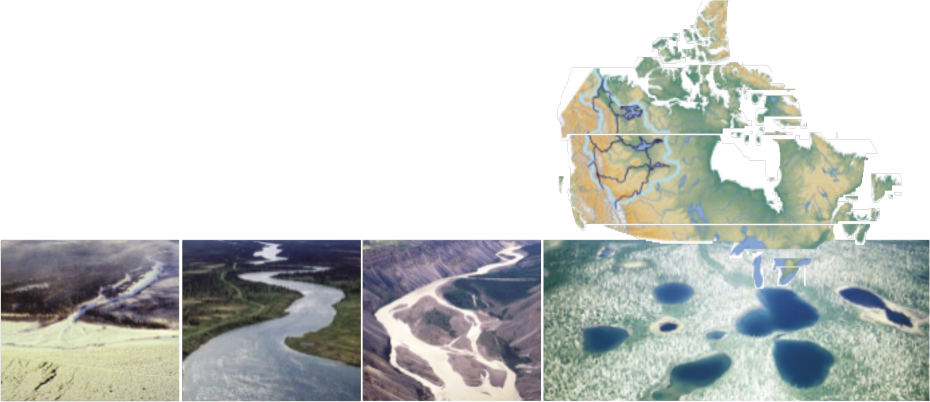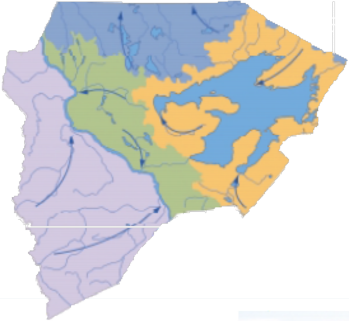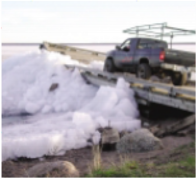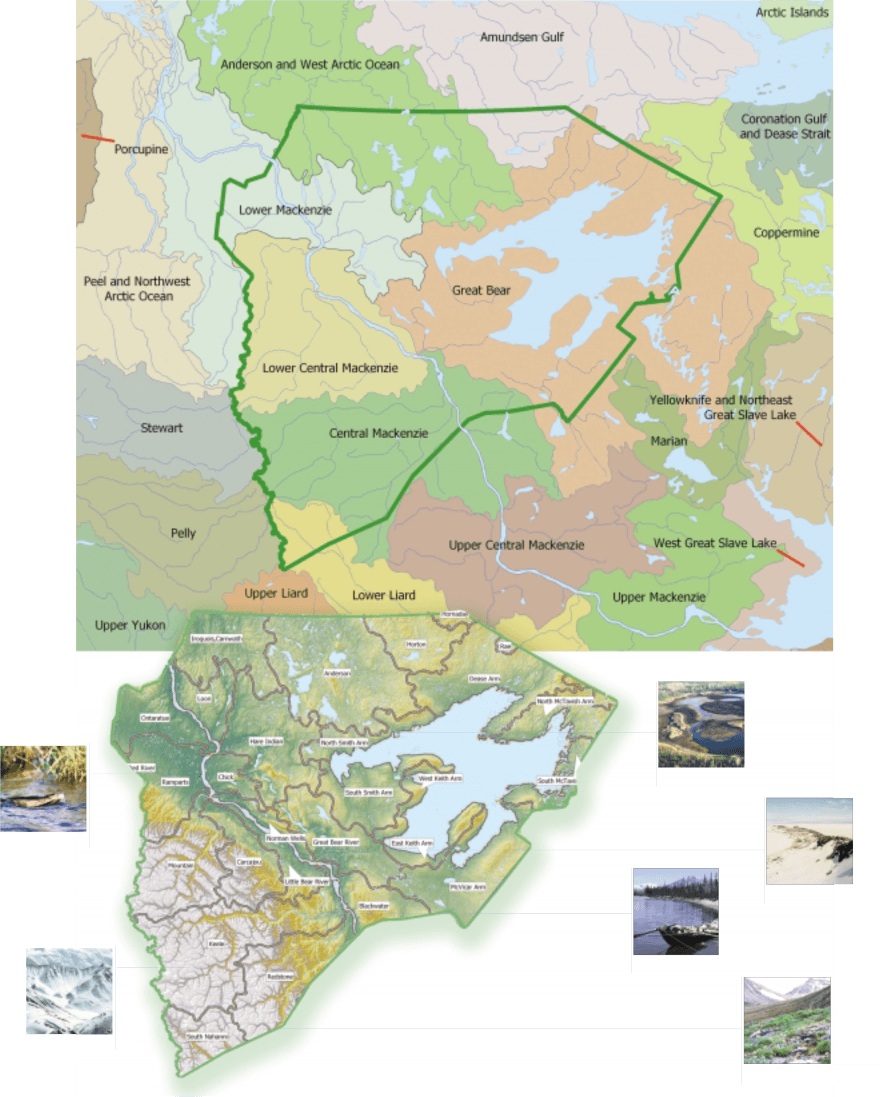Watersheds

Watersheds are areas of land containing a common set of streams and rivers that all drain into a single larger body of water, such as a larger river, a lake or an ocean. The Mackenzie River watershed which drains into the Beaufort Sea is one of the largest watersheds in the world. Large watersheds like the Mackenzie are commonly termed basins. All the rivers that drain into the Mackenzie, large and small, are part of the Mackenzie Basin Watershed, but also have their own smaller watersheds. Not only does water run into the streams and rivers from the surface of a watershed, but it also filters through the soil eventually draining into the streams and rivers.
The Mackenzie River Basin
The Mackenzie River Basin begins at the headwaters of the Peace and Athabasca Rivers, and ends 4,200 kilometres later at the Beaufort Sea. The watershed is 1.8 million square kilometres in size, and drains one-fifth of Canada’s land-base.
The Mackenzie River or Deh Cho (Big Water) begins at Great Slave Lake, forging a wide, 1,738 kilometre watercourse, heading “down north” across the Arctic Circle to the Beaufort Sea. Along the way, the Deh Cho’s warm, shallow water passes boreal and taiga forest. Finally, its heavy burden of sand and silt is deposited into the channels, lakes and sandbars of the Mackenzie Delta which provides vital habitat for many Arctic species. Millions of migrating birds use the Mackenzie River valley as their main migratory route toward the delta.

Mackenzie River Great Bear River Keele River
Where the water flows
The Sahtu can be seen as having four major directions of waterflow:
-
The West Mackenzie Region, in which water flows down from the Mackenzie mountains and whose watersheds drain into the west side of the Mackenzie River
-
The East Mackenzie Region, in which water flows eastward and whose watersheds flow into the Mackenzie River on it's east side.
-
The Arctic Region, in which water flows northward and whose watersheds flow directly into the Arctic ocean.
-
The Great Bear Region, in which all water flows into Great Bear Lake which then empties intothe Mackenzie River via Great Bear River.

Breakup Lisa-marie Pierrot, Fort Good Hope, 2000
I am going to tell you a story from when I was about six or seven years old. There is only so much that I can remember from when I was that age and younger. My family, some of my aunties and uncles, and my grandparents went out on the land for spring hunt. We's stay along the Mackenzie River at a place (across from) Grandview :
Here is one moment I will never forget, because it was so exciting. The ice was almost ready to go. One early morning, my dad and uncle went out hunting. They were gone all day. Everyone was sitting around after a hard day of work, when all of a sudden the ice cracked in half It slowly started to move.
We all started to get very frightened because my dad and uncle were still not back from their hunt. The rest of us sat around in an endless wait for my dad and uncle, calling all the places we could to see if anyone up river had seen them. Finally we saw a little black dot at the end of the point on the river. Sure enough, it was them.
I can't really remember what had happened next, but what I do remember was that while the ice was moving, I was standing along the riverbank, watching a good friend of the family running on the ice while it was still moving. She saved our skiddoo from drowning. Somebody had left it on the ice before it started to move. We were very thankful that we had her there with us. If not, we would have never had a skiddoo for next winter.

Spring break-up, Deline
Major Watersheds Found In The Sahtu And Surrounding Regions

Wetlands, Alpine, Boreal Fen, Gorabe (Manitou), Keele River, Mackenzie Mountains
Sahtu Regional Watersheds
There are 30 watershed regions in the Sahtu varying in area from 100 km2 to 26,000 km2
[ Sahtu Atlas Table of Contents ]
[ Next Section ]



 Phone: 867-374-4040
Phone: 867-374-4040 Email:
Email: